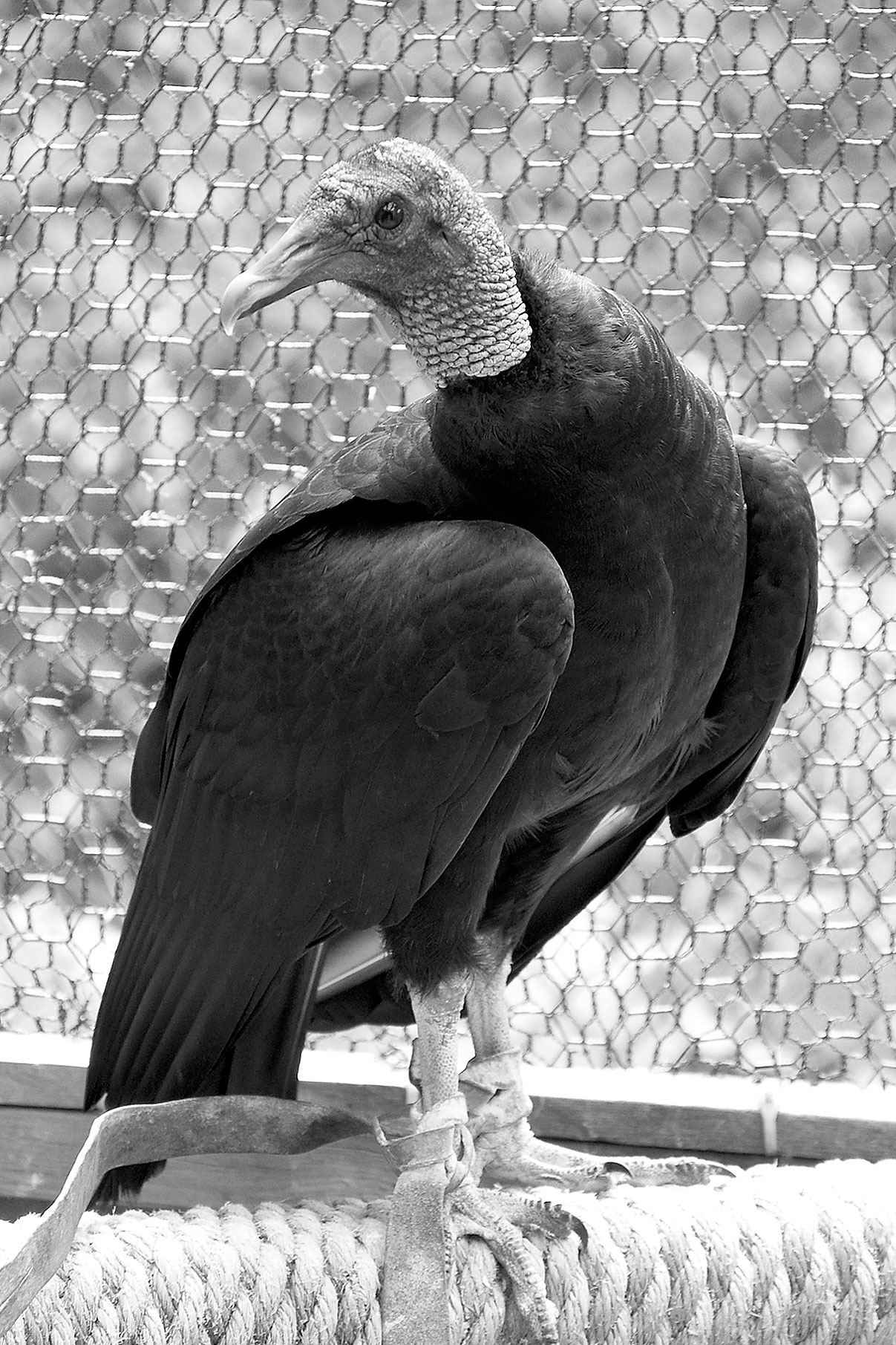The Vulture Who Stole Christmas
Ranger Jen Miller
Cunningham Falls State Park
You're a mean one, Mr. Grinch
You really are a heel.
You're as cuddly as a cactus,
You're as charming as an eel.
Mr. Grinch.
~ Dr.Seuss
 (Dec, 2011) For the past two years, a Christmas present has come to me from an unlikely source – a vulture. This vulture happens to reside in our Aviary at Cunningham Falls State Park. He is an imprinted Black vulture, part of the family of New World vultures
that include California condors.
(Dec, 2011) For the past two years, a Christmas present has come to me from an unlikely source – a vulture. This vulture happens to reside in our Aviary at Cunningham Falls State Park. He is an imprinted Black vulture, part of the family of New World vultures
that include California condors.
Rescued as a chick from a burning building by Baltimore City firefighters, he has relatively little fear of people. The lack of healthy fear makes him a bit of a menace to people - most of all me! Vultures are incredibly intelligent and when imprinted on human beings tend to be very particular about who they will tolerate and who shall be reviled. The Black vulture has
placed me in the latter category, except on Christmas Eve. For the past two years, he has allowed me to enter his enclosure on this blessed day and pick up his jesses (leg straps), and place him on my gloved arm. He even permits me to reward him for good behavior with a tug on his beak. But the rest of the year it’s game on.
Black vultures are more closely related to storks and cranes than other birds of prey like hawks. The similarities are evident in their physical appearance and behavior. Vulture feet are ineffectual unlike the lethal talons of raptors. The feet are used mainly to kick away competition from carrion and to hold a food item down while the lengthy, sharp beak twists and tears.
Black vulture legs are long and whitewashed with their own excrement. The poor potty skills actually benefit the vulture by inhibiting parasite infestation from rotting carcasses and aid in cooling the bird on hot days as the ammonia from the urine evaporates.
The vulture’s head is mostly featherless and this allows it to stay neat and parasite free when it feeds inside the cavity of large dead animals such a deer. Black vultures raise young, roost, and hunt or scavenge communally. A group of vultures, also known as a venue, is often made up of family members. Sandhill cranes and Black vultures express aggression in comparative
ways often by turning their backs to a perceived threat and then begin to manipulate or organize sticks or stones found on the ground nearby. This behavior has been observed in our captive vultures and implies self-assuredness usually only seen in prize fighters and the truly insane. Vultures do have a back up plan if a scuffle does not go according to plan. They vomit. Their
vomit is as acidic as battery acid and will dissuade any further pursuit by a potential threat. The act of vomiting also allows the vulture to be lighter and escape more easily if necessary.
Vultures are truly fascinating and an essential part of the ecosystem. They are Nature’s recyclers. Without Vultures, rotting carcasses would linger in the environment for a longer period of time. Deadly diseases would be much more prevalent as well. The stomach acid of vultures is so strong that it actually destroys bacteria and viruses like botulism and rabies! So while
their features and behaviors may not be cute and cuddly, they do serve a valuable purpose. I try to remember this every time our Black vulture charges and attacks my reflection on his enclosure door. There’s will always be Christmas Eve.